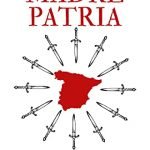
Contents
Rodeo in Texas, a Spanish tradition spread around the world
Where did the rodeos come from? Something that we consider so from the U.S, came from Mexico. Horses, cowboys, their clothes and even cows or cattle came from Spain before.
+ Hispanic Roots
Rodeo, Spanish word
The origin is so evident that even in the U.S.A., this ranch activity is still called by the Spanish word Rodeo, which shows its historical origin.
Texas cattle herd
Customs and clothes of Mexico
The territories of Texas were crossed by Spaniards already at the beginning of the year 1500, but they were occupied very at the end of 1600, and they were used as a border. For almost 150 years they belonged to New Spain and inherited some of the customs of the north of present-day Mexico, such as rodeos.
After the Mexican-American war, Mexico was forced to sign peace, by handing over half of its territory at a bargain price. By becoming a member of the U.S. In 1845, they continued to carry out traditional activities that were common especially in the current states of California, Arizona, New Mexico and Texas.
Rodeo was practiced in New Spain and the horses, cowboys, their harness and their clothes are Hispanic, from the North of Mexico and originally from Spain.
Spanish Knight

The use of the pike or spear caused them to be called Picador in bullfighting. He was also called Lancero or Varilarguero and even Piconero.
In New Spain, the border guards, the Cuera Dragons, who were soldiers on horseback, also used the pike or spear. They became famous for their effective cavalry charges.
VIDEO: Knight in Spain
The current initiation of an Andalusian Knight
Initiation of a young Andalusian, in the world of the horse and the bull
Report on the horse and the marshes in Spain. Learning about horse culture.
The training of a young Spanish man to face on horseback, his first bull of his.
Horse culture in Andalusia
Group of Spanish horsemen riding along the beach
Horse transfer in Spain
Transfer of horses in the Andalusian marshes of southern Spain
A tradition from Mexico and Spain
The rejoneo is a form of bullfighting on horseback with a long tradition in Spain
First rodeo
First cattle rodeo in the present U.S: It was organized by the Spanish Governor of Texas, just as they were in Mexico, the cattle fairs with rodeo. The clothes of the cowboys were inherited and in the style of the Cowboys of Chihuahua in Mexico
From Mexico to Texas
This competition and show does not even have its own clothes as original since they were the ones used by cowboys in Mexico. The first rodeo in Texas was organized in 1787.
It was Martínez Pacheco, the Spanish Governor of the territory, who decided to organize the Rodeo as part of a party. The large increase in herds of cattle in the area well deserved a celebration in the style of those celebrated in northern Mexico.
Texan Ranches
Ranches were soon created in Texas and New Mexico
Cows of a special breed that were raised in the Guadalquivir Valley, in southern Spain, with long horns were brought.
This fact, of having a long antler, allowed them to defend themselves from the wild animals that roamed and to be able to live alone in the field. They were able to defend themselves from many of the wild animals that lurked on their pasture lands.
These animals reproduced easily and survived in the field alone. Soon there was a great growth of cattle herds in Texas. And they well deserved a party like the ones that were held in the rest of New Spain
+ Hispanic Cowboys or Vaqueros
Rodeo and cowboys in North America and Hawaii
Mexican Clothes
They are also used in Texas
The clothes that the cowboys wore were those of the cowboys from the bordering state of Mexico (Chihuahua).
In the homeland of Charrería, considered a national sport in present-day Mexico, the clothes used by cowboy in Western movies are already used. Actually the primitive rodeo was born in these territories, as a consequence of the huge herds of cattle and the equestrian culture that arrived from Spain.
Livestock management
Skill, strength and courage
This entertainment and competition arose from the work of livestock. Cowboys spent long periods isolated in distant lands. For fun they came up with these competitions, which tested their skills in everyday jobs. They called them Rodeos, for the turns, detours and turns they had to make to control or tie the cattle.
The harnesses for the horses brought by the Spanish to America evolved in the territories of New Spain and were also used in Texas.
The Jaripeo
Origin of the Rodeo
This activity that was celebrated as a sport in the festivities of central Mexico in honor of the Virgin of Guadalupe. It consisted of a horseman with the help of the lasso tame foals. Later it was applied to bulls.
It is considered the origin of the Rodeo. Set of activities to surround the cattle, control it and take it to its destination.
California Jeans
Although the cowboys of Mexico or Texas are so well known, it is forgotten that these customs were widespread in other Hispanic lands. In California, cowboys reached a high level, developing techniques and skills that allowed them to control cattle and even bears. His fame was spread by the great perfection of the technique. There are those who consider that they became the best in these arts.
Hawaii Cowboys (Paniolos)
A curious situation occurred on the Hawaiian islands. With the arrival of Europeans, some cattle arrived. And little by little the breeding of wild cattle grew, due to the large amount of grass, and without predators.
When the number of cattle was very large and created problems, they tried to control it, but without tradition or knowledge, they had it very difficult. Then the King of the Islands imported a group of Cowboys, Californians, Mexicans, etc. (expert workers from Hispanic Haciendas) who laid the foundations for cattle exploitation. When arriving from Hispanic territories and of Spanish descent, like the Spanish word, it was difficult to pronounce for a Hawaiian, something like Paniolo remained. And the name is still maintained, as a rancher or for traditional meat restaurants.
So do not be surprised if you see cowboys in Hawaii, with their hats and boots, they are Paniolos, the culture of the Spanish horse
Its origin comes from the South of Spain
Charros de Salamanca (Spain)
They are still popularly known as Charros to all the inhabitants of the Spanish province of Salamanca. In these lands, the pastures are common where cattle are raised in a state of freedom from pigs to brave bulls. Formerly they were only the inhabitants of the area of Campo Charro (it extended through a part of Salamanca and part of León), a region of meadows where fighting bulls were raised, for bullfights.This word is already used in the century XVII, to describe something rough, or coarse. It is supposed to come from the Basque language “Txar” which can be translated as rustic. It was used to refer to the shepherd or horseman on horseback.
Francisco Montejo (from Salamanca), as advance of the Crown, accompanied Hernán Cortés, created a livestock model like the one existing in Salamanca in Spain in the lands of Mexico
Later, more people from Salamanca, knowledgeable about the work, arrived to take care of the ranches. These first farms in Guanajuato reflect this cultural and livestock heritage. The cities of Salamanca and León were even created in Mexico, as a nucleus of cattle settlement.
It comes from Spain: Andalusia
The Spanish brought cattle and cowboys to the territories of Mexico, Texas, California, New Mexico
Horse culture

In this equestrian exhibition with horses and riders from Andalusia (Spain), you can see some of the clothing and harness that the Spanish brought to America.
Cowboys sometimes wore leg protectors. What we have seen in Western movies, as something typical Texan, is also inherited from Spain.
Among the clothing, the use of chaps or chaps was common, which were placed over the pants protecting the legs. They were tied at the waist, being a kind of leggings. These protections were used to be able to cross areas with low scrub or undergrowth without hurting themselves.
Tradition at work and pilgrimages
Prepared for a pilgrimage, a young Andalusian woman in her traditional dress comes with her horse
It started as cowboy entertainment in Northern Mexico
The activities of care, surveillance and transportation of livestock that were carried out in the ranches of the Viceroyalty of New Spain gave rise to the rodeo.
The habitual movements on horseback of circling the cattle to group them and take them to another place became a sport for the free time in the secluded ranches sometimes separated from each other by long distances.
The different activities such as knocking down the calf, double lasso in pairs, riding the colt, riding the bull, single lasso, are some of the most popular tests.
The bullfighting festival
Preparation of the parade (paseillo) of bullfighters and rejoneadores in a bullring in Spain
This popular festival where bullfighters and rejoneadores demonstrate their skills, reflect the culture of the horse and bulls in Spain


